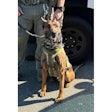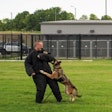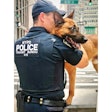In early 1960s England, a portion of the white working class was opposed to the rising number of immigrants who were competing for the available jobs. Active at the same time were the "Mods," who had revolted against the mainstream trends and the values of the English community. The Mods developed their own style of dress, values and musical tastes. In the mid-'60s, the Mod movement split, forming the first skinhead group.
The Mods continued to wear the same styles of dress and were multiracial in membership. The skinheads, however, were strictly white, working-class individuals who emphasized "white pride."
At about the same time, the "punk" movement arrived in the United States. Punk bands created and played music containing racial overtones and white pride sentiments. As the punk movement grew, it lead to the development of skinhead groups throughout the United States.
The first groups of racist skinheads were seen in Los Angeles and New York during the mid-1960s. But by the early 1980s, racist bands toured the United States playing at underground night clubs and Ku Klux Klan rallies. The bands aided in popularizing the violent skinhead groups that are common today.
Profile
Skinhead membership has traditionally drawn from dysfunctional working-class families, and it appears that many skinheads come from broken homes. Members can be as young as 13 and as old as 25. They typically possess average intelligence, but are often poorly educated.
Most members are recruited at the junior or senior high school level. They are usually unemployed, but when they do work, they generally perform menial labor for minimum wage.
As with other gangs, skinheads have acquired stylized clothing. The most common apparel they wear is the high-top, work-style boot that resembles the inexpensive work boots white factory workers once wore in England. These boots are known as "Docs," short for "Doctor Marten," a popular boot manufacturer. They come in a variety of colors and can be purchased with a steel toe. Skinheads all over the world wear these boots as part of their uniform.
Gang members also wear tailored pants, T-shirts and suspenders, or braces, as they call them. Nylon flight or bomber jackets are also commonly worn. Just as Bloods and Crips sport red and blue bandannas to advertise their gang affiliation, skinheads often wear white railroad bandannas as a symbol for white power.
At one time, skinheads shaved their heads to avoid having their hair pulled out during a fight. Today, some skinheads are letting their hair grow longer, but it is still worn short.
Like other gangs, skinheads use graffiti to communicate. It usually makes a general statement about anti-Semitic, racial or political attitudes using a variety of symbols, abbreviations and names of hate music bands. The graffiti also often reveals rivalries with other gangs and frequently includes swastikas, lightning bolts, racial slurs and the abbreviation for Supreme White Power (SWP), the White Aryan Resistance (WAR), White Power (WP) and the Ku Klux Klan (KKK).
Like other street gangs, skinhead graffiti may also include the gang's name, a member's street nickname and a racial slur. The graffiti often denotes the part of the country that a particular group is from.
Skinheads also use hand gestures to communicate. The gesture used by the first skinhead groups was the right arm raised to form the Nazi salute. This gesture is still common today, as are hand signs formed to make letters such as "WP," which stand for "white power." Gang names are also signed, often as a form of challenge or insult to rival gangs.
Tattoos have always played a role in skinhead gang subculture. According to Sgt. R.K. Miller of the Huntington Beach (Calif.) Police Department, the most common skinhead tattoos are really an extension of skinhead graffiti. Swastikas, lightning bolts, crossed hammers and American, Confederate or Nazi flags are frequently depicted in tattoos. As in skinhead graffiti, acronyms for Supreme White Power, White Power, the White Aryan Resistance and the Ku Klux Klan are popular in skinhead tattoos. Hooded figures, Vikings and the words "Sieg Heil" (hail victory) are also common.
Tattoos are worn on the hands, arms, stomach, back, neck, face and inside of the lips. They remind skinheads of their commitment to the group.
Culture
The acronym "ZOG" is commonly used in the skinhead vocabulary. The letters translate to "Zionist Occupied Government," and refer to the supposed efforts by Jews to control the United States and the rest of the world. Radical skinheads often avoid wearing Levis because they falsely believe the Levi Strauss Company is owned by members of the Jewish community and is therefore part of ZOG.
Skinhead music reflects an English working-class origin. The lyrics are racist and violent and play an important part in the skinhead lifestyle.
Like other gang members, skinheads use drugs and alcohol. However, they seem to favor the use of alcohol, beer being the beverage of choice. Drugs such as cocaine and heroin are used with less frequency.
Some skinhead gang members align their white supremacist beliefs with occult religions, allegedly as worshippers of Satan. For these skinheads, the occult belief system becomes a part of their political and racist ideologies. Beyond the violence directed toward minorities and gays, these hybrid beliefs incite additional anti-social behavior. Animal mutilations, church desecrations, grave site disturbances, animal sacrifices, drug usage, secret rituals or ceremonies honoring Satan and self-mutilation are reportedly a few of the activities members of this hybrid group are involved in.
Women are not excluded from skinhead gangs. To date, however, there are no reports of all-female skinhead gangs. Women associate with male gang members and are often present at gatherings and social functions. Female skinhead gang members may also tattoo themselves, use the same hand signs and wear similar clothing. However, they do not generally shave their heads.
Activity
Skinheads commit hate crimes based on a victim's race, ethnicity, religion or sexual orientation. The commission of these crimes is an outgrowth of racist skinhead philosophies and belief systems. The types of crimes they commit range from misdemeanor malicious mischief to murder. According to Sgt. Miller of the Huntington Beach (Calif.) Police Department, "The most common first arrest for a skinhead is assault with a deadly weapon."
Skinheads have been involved in all types of crime, including home invasion robbery and drive-by shootings. They have been known to arm themselves with shotguns, semiautomatic pistols and assault rifles. The most commonly used weapons are baseball bats, knives and boots.
Skinheads target "sub-humans," minorities and "race traitors" who they believe pose a threat. The race traitor is an Anglo or Northern European who does not prescribe to the skinhead philosophy. A traitor may also be a skinhead who has changed his or her view of the white supremacy movement.
Recent Trends
Recent attempts at unifying different skinhead factions include closer ties with some organized white supremacist groups like the Ku Klux Klan and the American Nazi Party. Some skinheads who have been recruited by these types of organizations have made attempts at running for political office. These gangs will probably continue to grow throughout the '90s, as will their violent behavior. This is especially true as the year 2000 approaches. Many skinheads are expecting a race war at the turn of the century.
In an attempt to blend in, some skinheads are growing their hair long. This new look does not necessarily mean that they have left behind their gang or their beliefs. Be Safe.
Al Valdez is an investigator with the Orange County (Calif.) District Attorney's Office and author of the book, "Gangs". He is also a consultant to the Orange County Board of Education, the California Department of Justice and the Office of Juvenile Justice and Delinquency.












